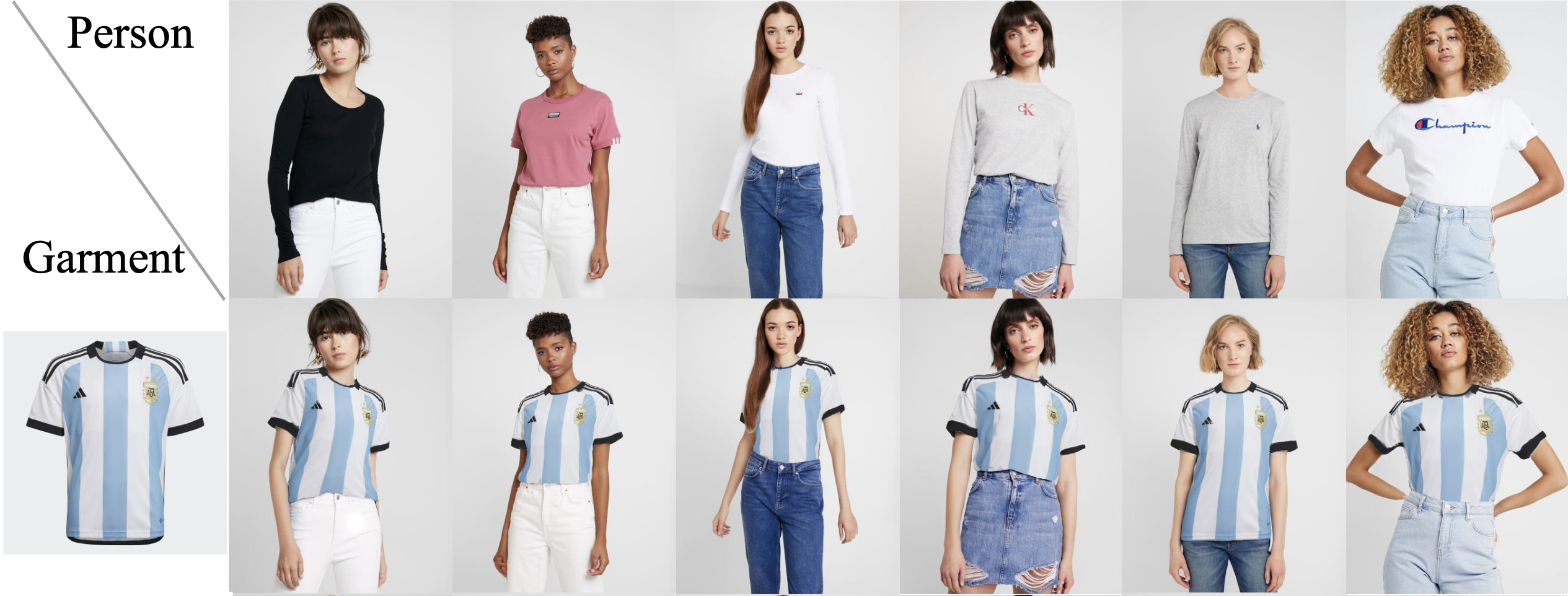GP-VTON: Towards General Purpose Virtual Try-on via Collaborative Local-Flow Global-Parsing Learning
Image-based Virtual Try-ON aims to transfer an in-shop garment onto a specific person. Existing methods employ a global warping module to model the anisotropic deformation for different garment parts, which fails to preserve the semantic information of different parts when receiving challenging inputs (e.g, intricate human poses, difficult garments). Moreover, most of them directly warp the input garment to align with the boundary of the preserved region, which usually requires texture squeezing to meet the boundary shape constraint and thus leads to texture distortion. The above inferior performance hinders existing methods from real-world applications. To address these problems and take a step towards real-world virtual try-on, we propose a General-Purpose Virtual Try-ON framework, named GP-VTON, by developing an innovative Local-Flow Global-Parsing (LFGP) warping module and a Dynamic Gradient Truncation (DGT) training strategy. Specifically, compared with the previous global warping mechanism, LFGP employs local flows to warp garments parts individually, and assembles the local warped results via the global garment parsing, resulting in reasonable warped parts and a semantic-correct intact garment even with challenging inputs.On the other hand, our DGT training strategy dynamically truncates the gradient in the overlap area and the warped garment is no more required to meet the boundary constraint, which effectively avoids the texture squeezing problem. Furthermore, our GP-VTON can be easily extended to multi-category scenario and jointly trained by using data from different garment categories. Extensive experiments on two high-resolution benchmarks demonstrate our superiority over the existing state-of-the-art methods.
PDF Abstract CVPR 2023 PDF CVPR 2023 Abstract


 DensePose
DensePose
 VITON-HD
VITON-HD